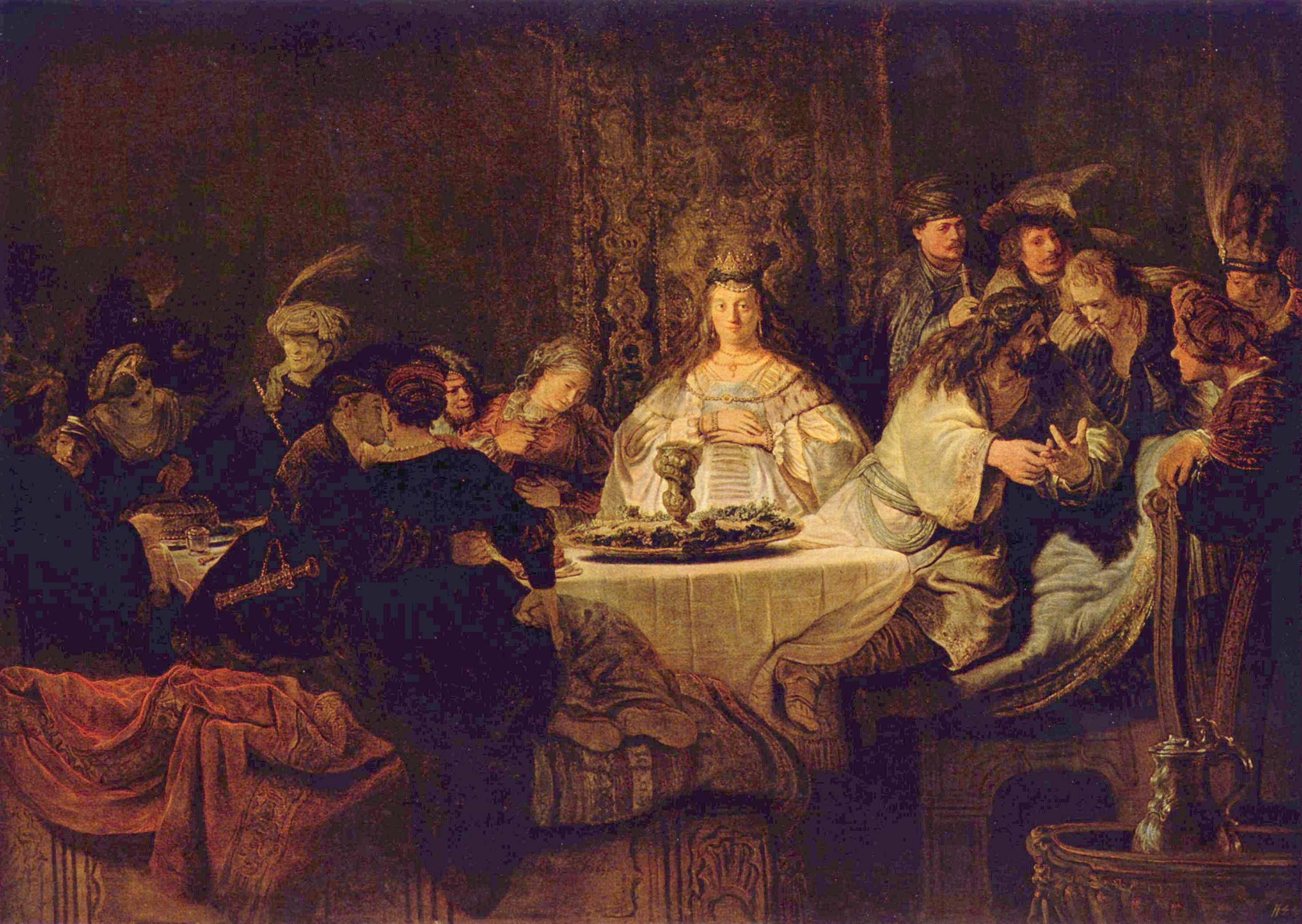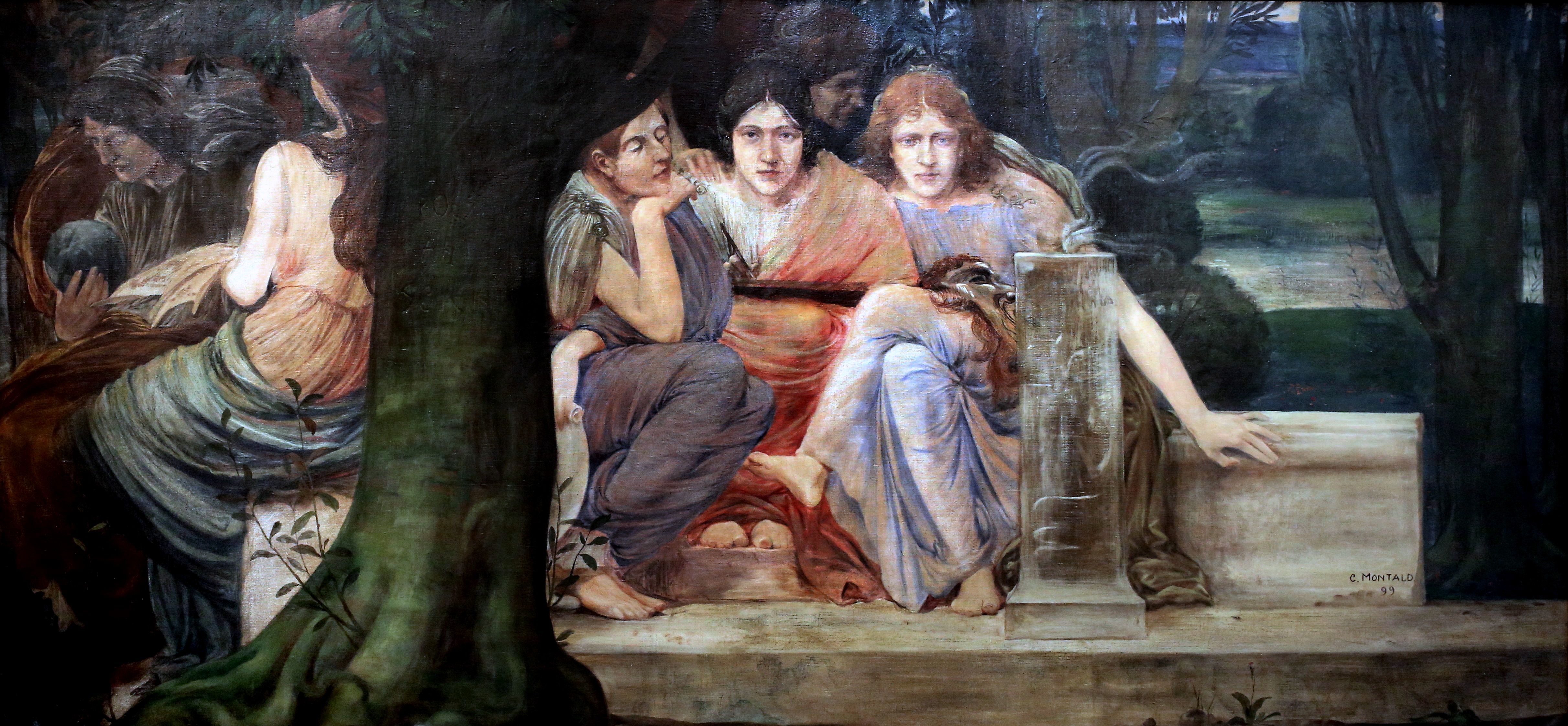|
Riddles (Persian)
The Persian term for riddle is ''chīstān'' ( fa, چیسْتان), literally 'what is it?', a word that frequently occurs in the opening formulae of Persian riddles. However, the Arabic loan-word is also used. Traditional Persian rhetorical manuals almost always handle riddles, but Persian riddles have enjoyed little modern scholarly attention. Yet in the assessment of A. A. Seyed-Gohrab, 'Persian literary riddles provide us with some of the most novel and intricate metaphors and images in Persian poetry'. Genres and their histories Persian riddles occur in several different literary forms, and it is helpful to trace the history of the Persian riddle through these forms. It is assumed that folk-riddles circulated in Persian from early times, and riddles are prominent in Persian romances set in earlier, pre-Islamic times, perhaps indicating the earlier popularity of the form. Erotic allusions are common in medieval Persian riddles, as in other kinds of metaphorical description. Me ... [...More Info...] [...Related Items...] OR: [Wikipedia] [Google] [Baidu] |
Riddle
A riddle is a statement, question or phrase having a double or veiled meaning, put forth as a puzzle to be solved. Riddles are of two types: ''enigmas'', which are problems generally expressed in metaphorical or allegorical language that require ingenuity and careful thinking for their solution, and ''conundra'', which are questions relying for their effects on punning in either the question or the answer. Archer Taylor says that "we can probably say that riddling is a universal art" and cites riddles from hundreds of different cultures including Finnish, Hungarian, American Indian, Chinese, Russian, Dutch and Filipino sources amongst many others. Many riddles and riddle-themes are internationally widespread. In the assessment of Elli Köngäs-Maranda (originally writing about Malaitian riddles, but with an insight that has been taken up more widely), whereas myths serve to encode and establish social norms, "riddles make a point of playing with conceptual boundaries and cross ... [...More Info...] [...Related Items...] OR: [Wikipedia] [Google] [Baidu] |
Manuchehr
Manūchehr Help:IPA/English">mænuː'tʃer.html" ;"title="Help:IPA/English.html" ;"title="nowiki/>Help:IPA/English">mænuː'tʃer">Help:IPA/English.html" ;"title="nowiki/>Help:IPA/English">mænuː'tʃer (, older Persian Manōčihr, Avestan 𐬨𐬀𐬥𐬎𐬱𐬗𐬌𐬚𐬭𐬀 Manuščiθra), is the eighth Shah of the Pishdadian dynasty of Persia according to ''Shahnameh''. He is the first of the legendary Iranian Shahs who ruled Iran after the breakup of the world empire of Manūchehr's great-grandfather, Fereydūn. Manūchehr was the grandson of Iraj, who was the son of Fereydūn, and he avenged the death of Īrāj at the hands of Fereydūn's other two sons, Salm and Tur. From the death of Tūr in Manūchehr's war of vengeance sprang a war between the peoples of Iran and Turan that would last for centuries, until the reign of Kai Khosrow. Manūchehr died after a reign of 120 years, and was succeeded by his son Nowzar. Family Tree Sources and reference ... [...More Info...] [...Related Items...] OR: [Wikipedia] [Google] [Baidu] |
Literary Genres
A literary genre is a category of literature. Genres may be determined by literary technique, setting tone, tone, Content (media), content, or length (especially for fiction). They generally move from more abstract, encompassing classes, which are then further sub-divided into more concrete distinctions. The distinctions between genres and categories are flexible and loosely defined, and even the rules designating genres change over time and are fairly unstable. Genres can all be in the form of prose or poetry. Additionally, a genre such as satire, allegory or pastoral might appear in any of the above, not only as a subgenre (see below), but as a mixture of genres. Finally, they are defined by the general cultural movement of the historical period in which they were composed. History of genres Aristotle The concept of genre began in the works of Aristotle, who applied biological concepts to the classification of literary genres, or, as he called them, "species" (eidē). Th ... [...More Info...] [...Related Items...] OR: [Wikipedia] [Google] [Baidu] |
Riddles (Arabic)
Riddles are historically a significant genre of Arabic literature. The Qur’an does not contain riddles as such, though it does contain conundra. But riddles are attested in early Arabic literary culture, 'scattered in old stories attributed to the pre-Islamic bedouins, in the ''ḥadīth'' and elsewhere; and collected in chapters'. Since the nineteenth century, extensive scholarly collections have also been made of riddles in oral circulation. Although in 1996 the Syrian proverbs scholar Khayr al-Dīn Shamsī Bāshā published a survey of Arabic riddling, analysis of this literary form has been neglected by modern scholars, including its emergence in Arabic writing; there is also a lack of editions of important collections. A major study of grammatical and semantic riddles was, however, published in 2012, and since 2017 legal riddles have enjoyed growing attention.Elias G. Saba, ''Harmonizing Similarities: A History of Distinctions Literature in Islamic Law'', Islam – Thought, ... [...More Info...] [...Related Items...] OR: [Wikipedia] [Google] [Baidu] |
Riddle
A riddle is a statement, question or phrase having a double or veiled meaning, put forth as a puzzle to be solved. Riddles are of two types: ''enigmas'', which are problems generally expressed in metaphorical or allegorical language that require ingenuity and careful thinking for their solution, and ''conundra'', which are questions relying for their effects on punning in either the question or the answer. Archer Taylor says that "we can probably say that riddling is a universal art" and cites riddles from hundreds of different cultures including Finnish, Hungarian, American Indian, Chinese, Russian, Dutch and Filipino sources amongst many others. Many riddles and riddle-themes are internationally widespread. In the assessment of Elli Köngäs-Maranda (originally writing about Malaitian riddles, but with an insight that has been taken up more widely), whereas myths serve to encode and establish social norms, "riddles make a point of playing with conceptual boundaries and cross ... [...More Info...] [...Related Items...] OR: [Wikipedia] [Google] [Baidu] |
Afghanistan
Afghanistan, officially the Islamic Emirate of Afghanistan,; prs, امارت اسلامی افغانستان is a landlocked country located at the crossroads of Central Asia and South Asia. Referred to as the Heart of Asia, it is bordered by Pakistan to the Durand Line, east and south, Iran to the Afghanistan–Iran border, west, Turkmenistan to the Afghanistan–Turkmenistan border, northwest, Uzbekistan to the Afghanistan–Uzbekistan border, north, Tajikistan to the Afghanistan–Tajikistan border, northeast, and China to the Afghanistan–China border, northeast and east. Occupying of land, the country is predominantly mountainous with plains Afghan Turkestan, in the north and Sistan Basin, the southwest, which are separated by the Hindu Kush mountain range. , Demographics of Afghanistan, its population is 40.2 million (officially estimated to be 32.9 million), composed mostly of ethnic Pashtuns, Tajiks, Hazaras, and Uzbeks. Kabul is the country's largest city and ser ... [...More Info...] [...Related Items...] OR: [Wikipedia] [Google] [Baidu] |
Teheran
Tehran (; fa, تهران ) is the largest city in Tehran Province and the capital of Iran. With a population of around 9 million in the city and around 16 million in the larger metropolitan area of Greater Tehran, Tehran is the most populous city in Iran and Western Asia, and has the second-largest metropolitan area in the Middle East, after Cairo. It is ranked 24th in the world by metropolitan area population. In the Classical era, part of the territory of present-day Tehran was occupied by Rhages, a prominent Median city destroyed in the medieval Arab, Turkic, and Mongol invasions. Modern Ray is an urban area absorbed into the metropolitan area of Greater Tehran. Tehran was first chosen as the capital of Iran by Agha Mohammad Khan of the Qajar dynasty in 1786, because of its proximity to Iran's territories in the Caucasus, then separated from Iran in the Russo-Iranian Wars, to avoid the vying factions of the previously ruling Iranian dynasties. The capital has been mo ... [...More Info...] [...Related Items...] OR: [Wikipedia] [Google] [Baidu] |
Occasional Poetry
Occasional poetry is poetry composed for a particular occasion. In the history of literature, it is often studied in connection with orality, performance, and patronage. Term As a term of literary criticism, "occasional poetry" describes the work's purpose and the poet's relation to subject matter. It is not a genre, but several genres originate as occasional poetry, including epithalamia (wedding songs), dirges or funerary poems, paeans, and victory odes. Occasional poems may also be composed exclusive of or within any given set of genre conventions to commemorate single events or anniversaries, such as birthdays, foundings, or dedications. Occasional poetry is often lyric because it originates as performance, in antiquity and into the 16th century even with musical accompaniment; at the same time, because performance implies an audience, its communal or public nature can place it in contrast with the intimacy or personal expression of emotion often associated with the term "ly ... [...More Info...] [...Related Items...] OR: [Wikipedia] [Google] [Baidu] |
Quatrain
A quatrain is a type of stanza, or a complete poem, consisting of four lines. Existing in a variety of forms, the quatrain appears in poems from the poetic traditions of various ancient civilizations including Persia, Ancient India, Ancient Greece, Ancient Rome, and China, and continues into the 21st century, where it is seen in works published in many languages. This form of poetry has been continually popular in Iran since the medieval period, as Ruba'is form; an important faction of the vast repertoire of Persian poetry, with famous poets such as Omar Khayyam and Mahsati Ganjavi of Seljuk Persia writing poetry only in this format. Michel de Nostredame (Nostradamus) used the quatrain form to deliver his famous prophecies in the 16th century. There are fifteen possible rhyme schemes, but the most traditional and common are ABAA, AAAA, ABAB, and ABBA. Forms *The heroic stanza or elegiac stanza consists of the iambic pentameter, with the rhyme scheme of ABAB or AABB. An e ... [...More Info...] [...Related Items...] OR: [Wikipedia] [Google] [Baidu] |
Hunar-nāma
''Hunar-nāma'' ('the book of excellence', also transliterated ''Honarnāme'') is a 487-distich Persian '' mathnavī'' poem composed by ‘Uthmān Mukhtārī at Tabas in the period 500-508 (1105-13 CE), when he was at the court of Seljuqs The Seljuk dynasty, or Seljukids ( ; fa, سلجوقیان ''Saljuqian'', alternatively spelled as Seljuqs or Saljuqs), also known as Seljuk Turks, Seljuk Turkomans "The defeat in August 1071 of the Byzantine emperor Romanos Diogenes by the Turk ... in Kirmān. The poem is dedicated to the ruler of Tabas, Yamīn al-Dowla (aka Ḥisām ad-Dīn Yamīn ad-Dowla Shams al-Ma‘ālī Abū ’l-Muẓaffar Amīr Ismā‘īl Gīlakī, and can be read as a 'letter of application' demonstrating Mukhtārī's skill as a court poet. It has been characterised as 'perhaps the most interesting of the poems dedicated to Gīlākī'. Form The poem is unique among ''masnavī''s for portraying a young poet being tested, not by a more senior poet as in other me ... [...More Info...] [...Related Items...] OR: [Wikipedia] [Google] [Baidu] |
Uthman Mukhtari
Abū ‘Umar ‘Uthmān b. ‘Umar Mukhtārī Ghaznavī (born c. 467/1074-75, died 513×15/1118×21) was a Persian poet of the Ghaznavids, an empire originating from Ghazna located in Afghanistan. He had patrons at the courts of the Qarakhānids, the Seljūqs of Kirman, and the Ismaili ruler of Tabas. In the assessment of A. A. Seyed-Gohrab, in Persian literary history, he is known for his detailed and extensive poetic descriptions ('' vaṣf'') and his interest in literary riddles. His ability lies first of all in the minute description of courtly events such as royal banquets, hunting grounds, battlefields, and Islamic and pre-Islamic Persian festivals. Originating from Ghazna, he is thought to have written the ''Shahryar-nama'', which describes the struggles of Muslims against Indian heathens during the Ghaznavid era. The epic was composed in 3 years. Parts of it remain in the British Museum. While at Tabas in 500-508 (1105–13), he composed the '' Hunar-nāma'', dedicating ... [...More Info...] [...Related Items...] OR: [Wikipedia] [Google] [Baidu] |





.jpg)